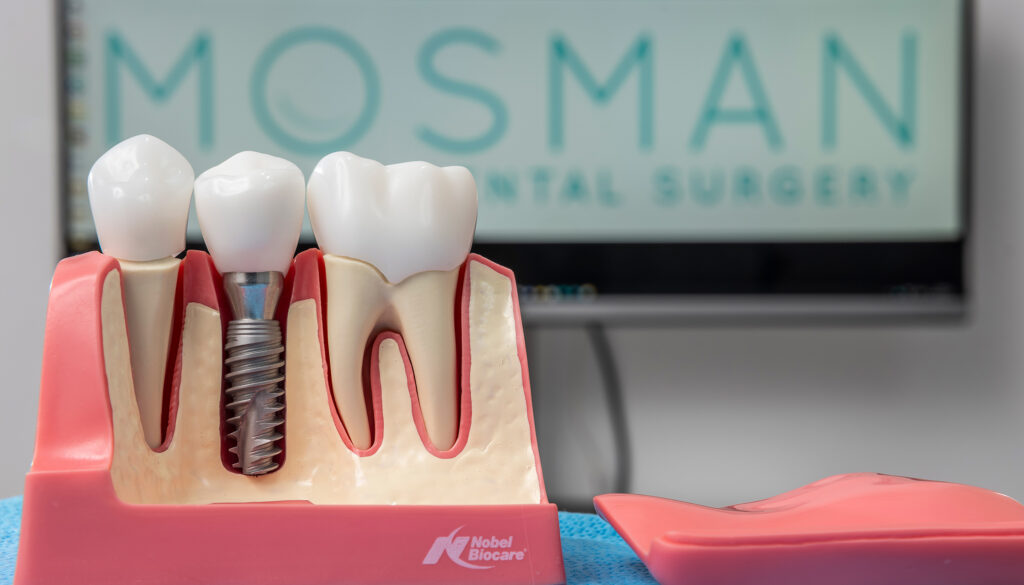The first dental implant was made of titanium and placed in a patient’s mouth in Europe in the 1960s. Since then millions of titanium implants have successfully been placed and are still in function. Titanium has proved to be an excellent material because of its strength and the attractiveness of its surface to bone cells leading to osseointegration. However, it does have some drawbacks. There are some cases, albeit rare of patients being or developing a reaction to the titanium. Also, like any metal titanium corrodes and small amounts of titanium ions can be released into the blood stream. Titanium is also grey in colour and in some patients with thin boney plates and thin gingival tissue a slight grey shine through is visible leading to a poor aesthetic outcome.
Our medical colleagues in orthopaedics have largely moved away from titanium in joint replacements favoring zirconia. Zirconia in its elemental form is a metal but in the form used in medicine and dentistry is a ceramic.
It is pure white in colour, so aesthetics are never a concern. It is completely biocompatible, there are no reports in the literature of any allergic responses. It also has a very low affinity for dental plaque and bacteria making it easily cleansable and a perfect choice for use in the mouth.
All the research suggests it exhibits the same strength and fracture resistance as titanium and the long term success rates are comparable.

It is our view at Mosman Dental Surgery that as in restorative dentistry ceramics such as zirconia have replaced metals such as gold and amalgam, zirconia implants will become the material of choice for most patients. We are one of the largest providers of all zirconia implants in the greater Sydney area and exclusively place Nobel Pearl implants because of their non metallic, two piece zirconia construction.


Recent Comments